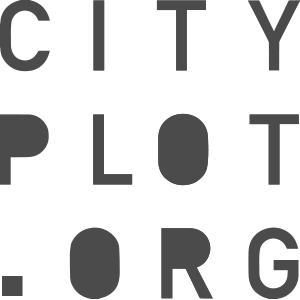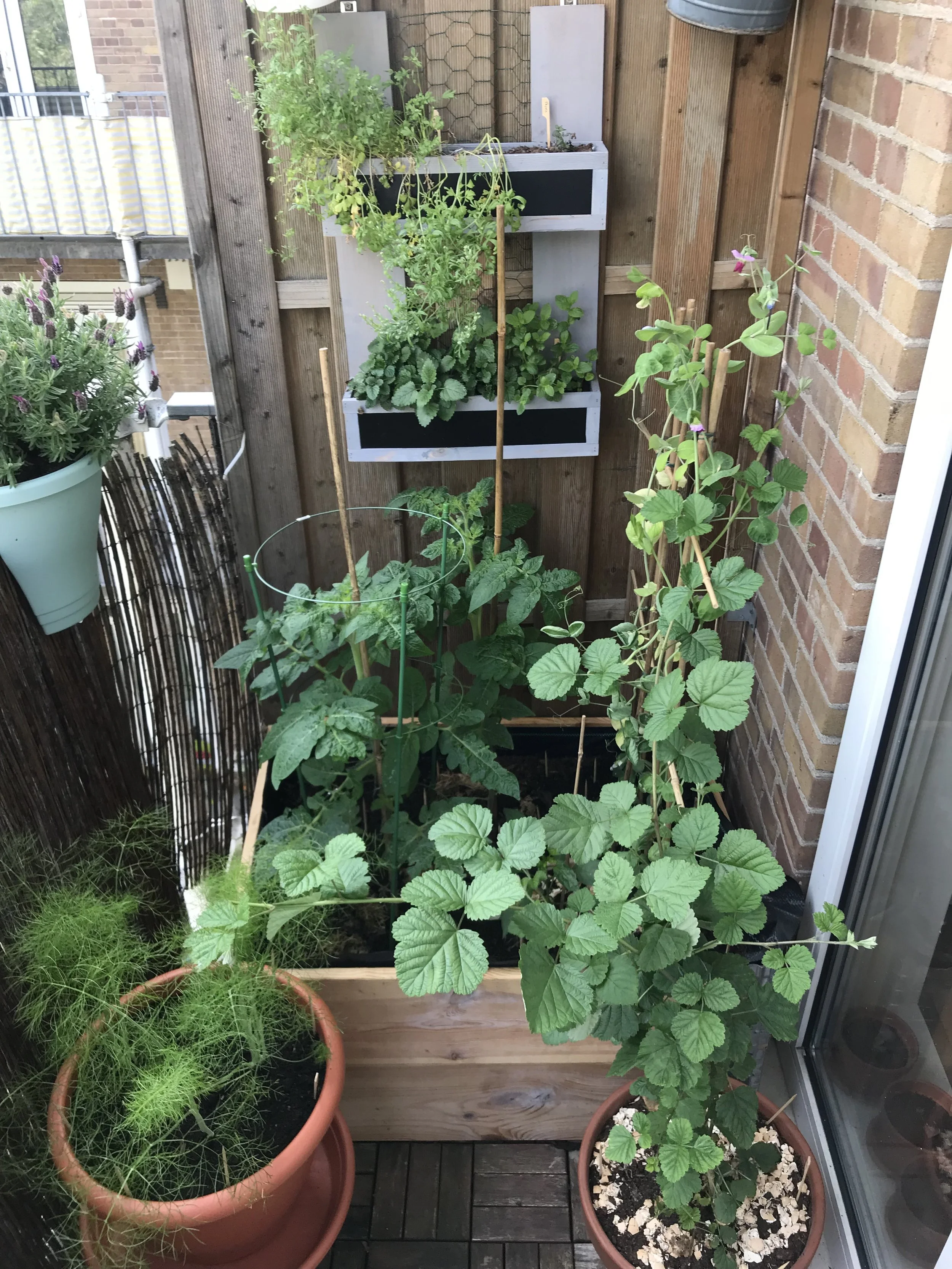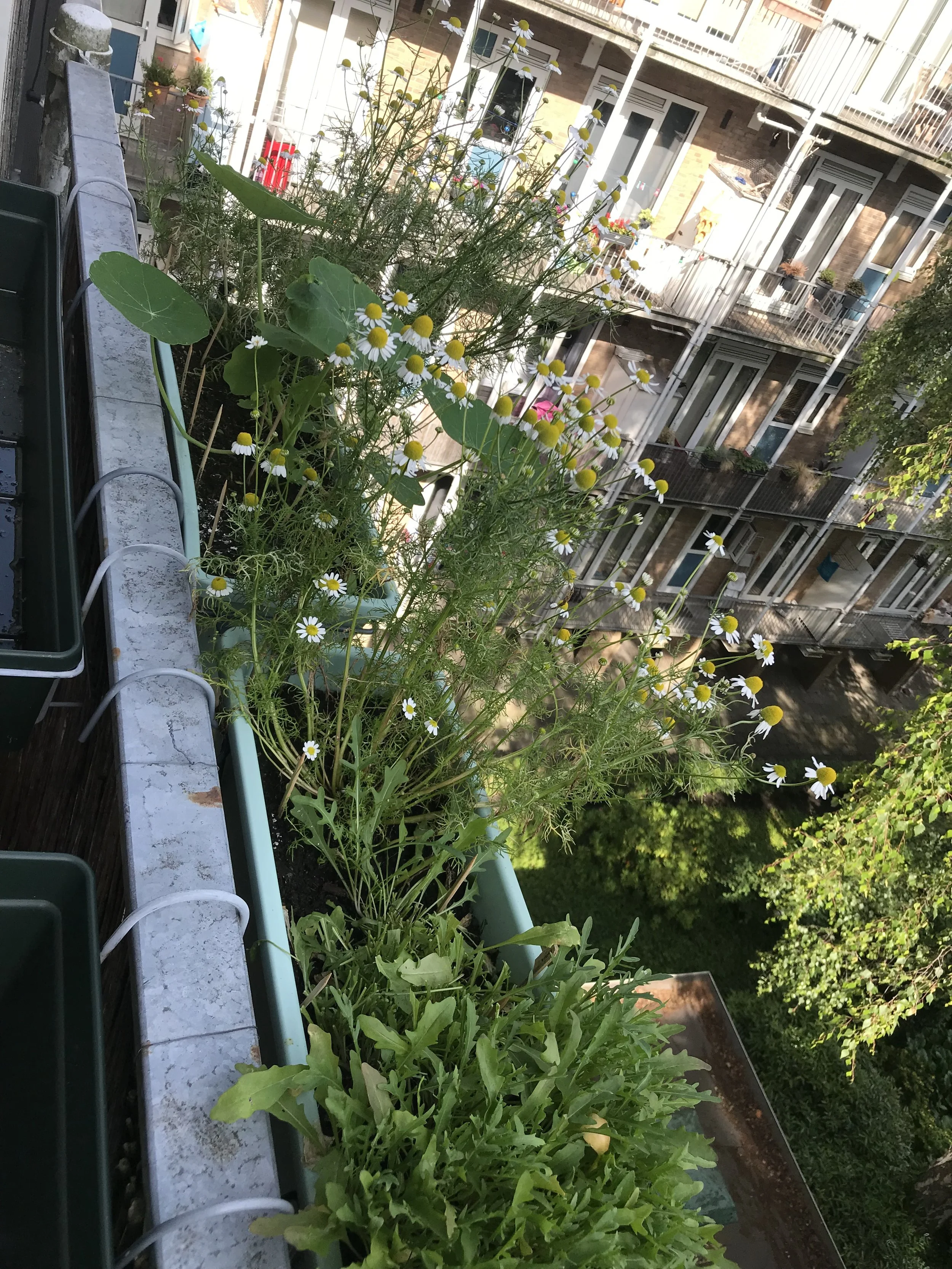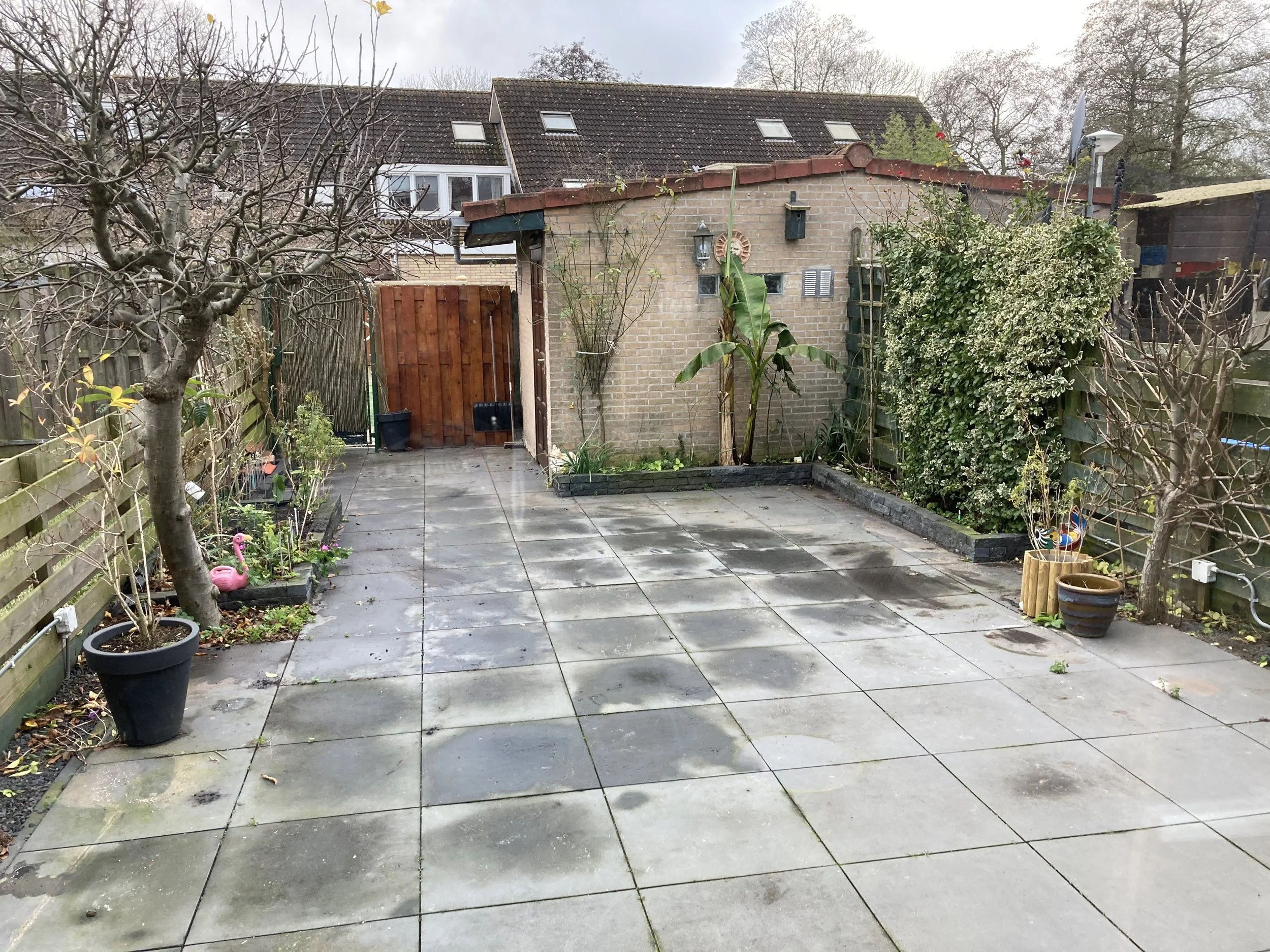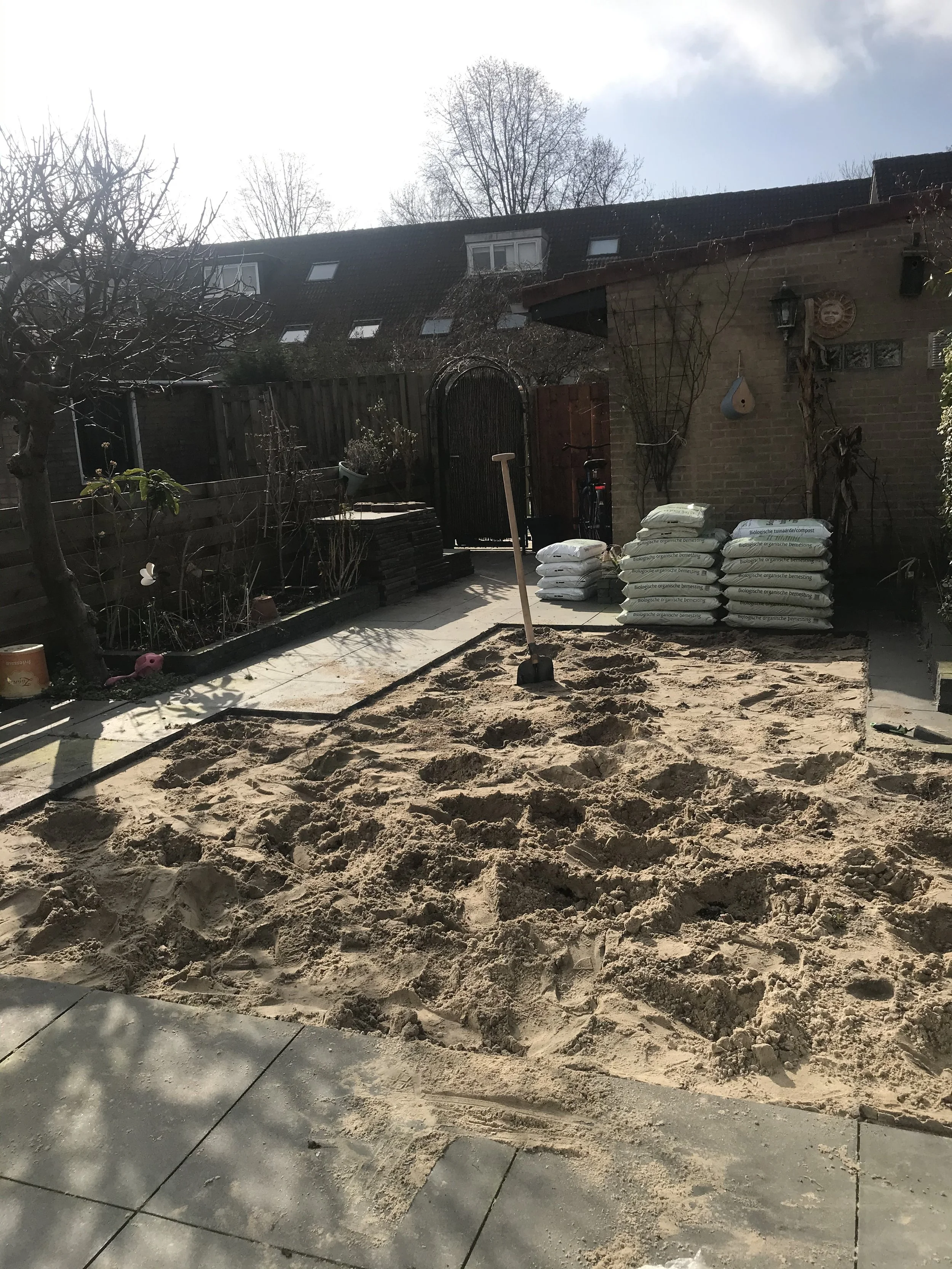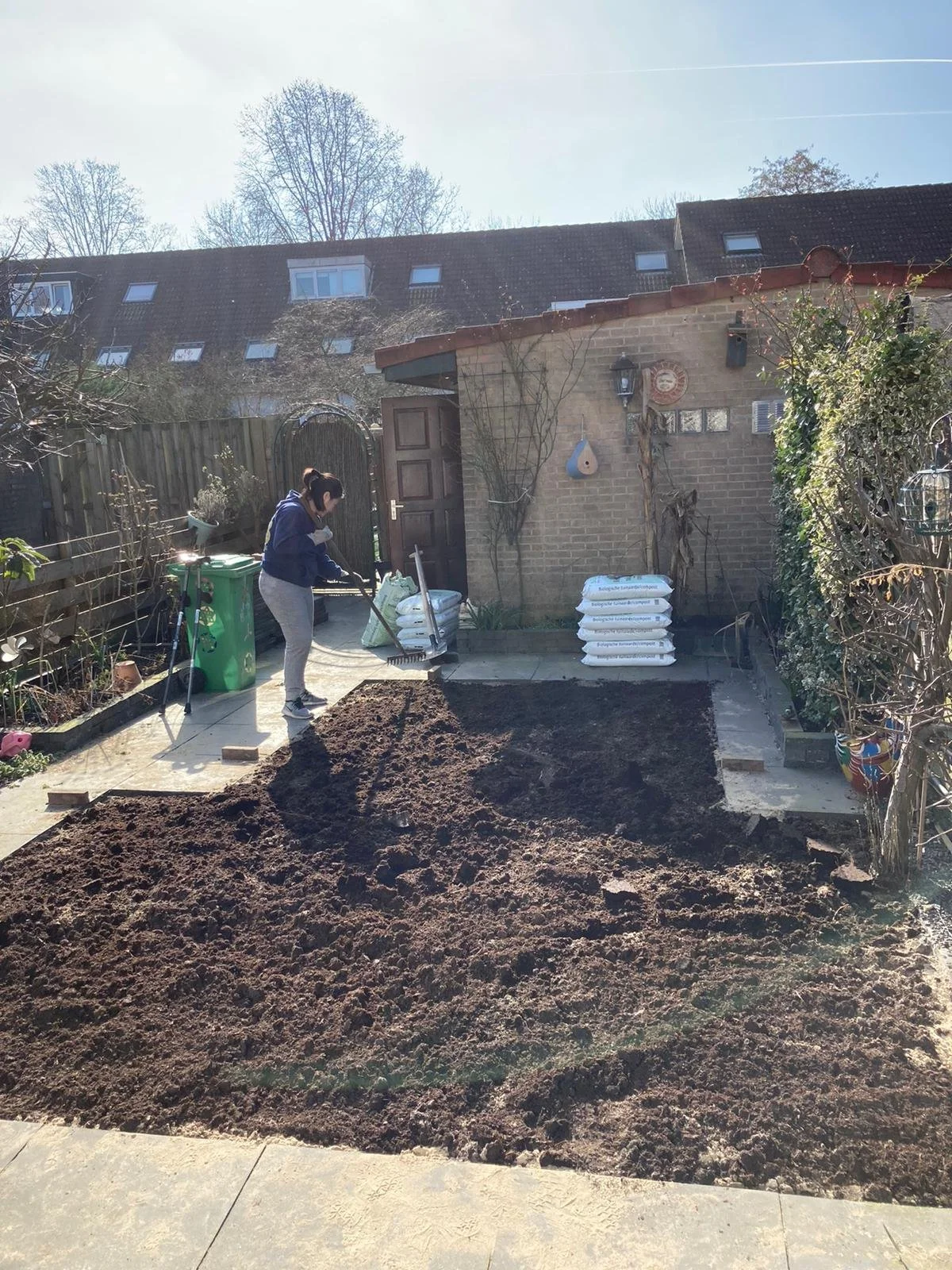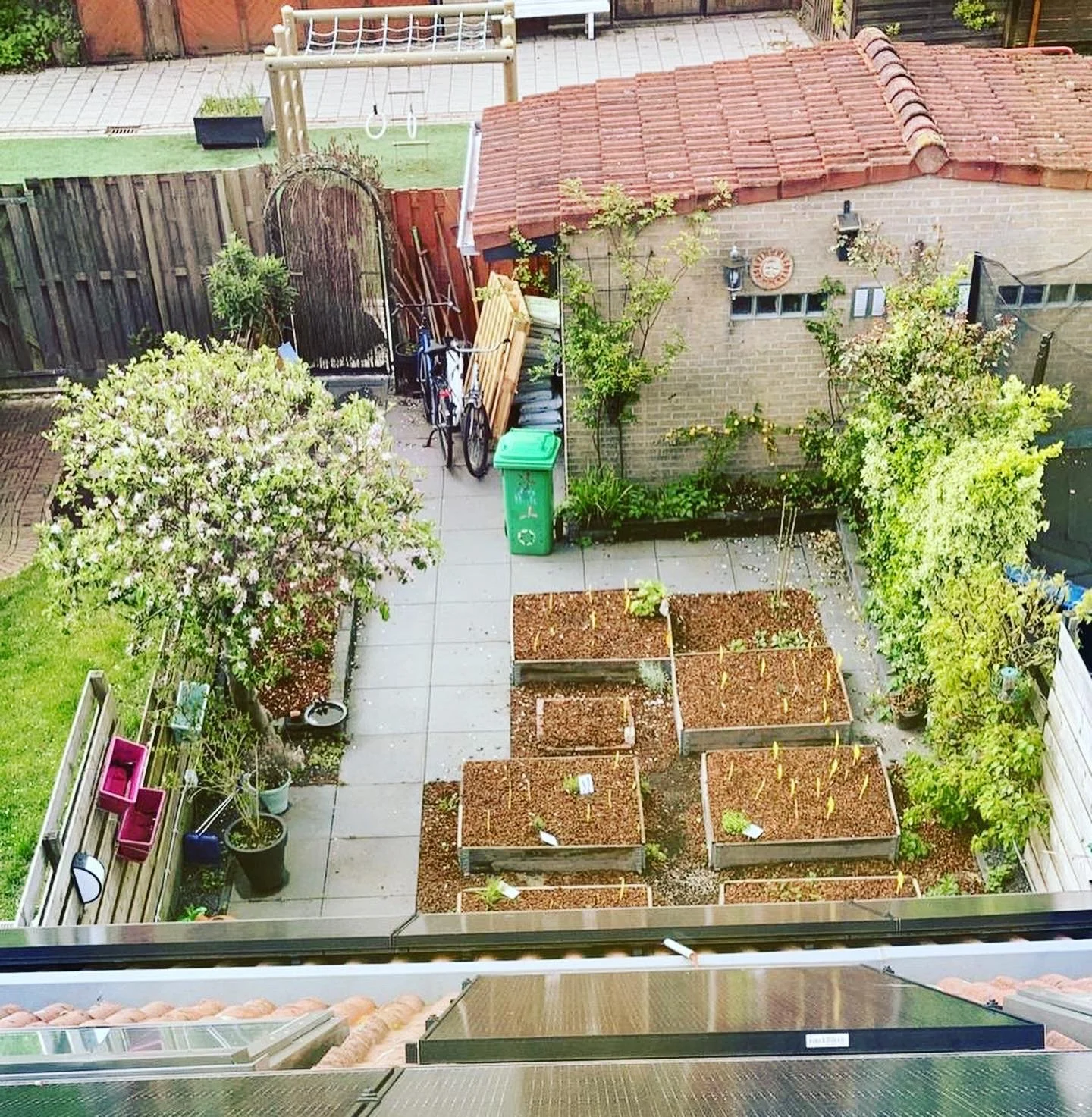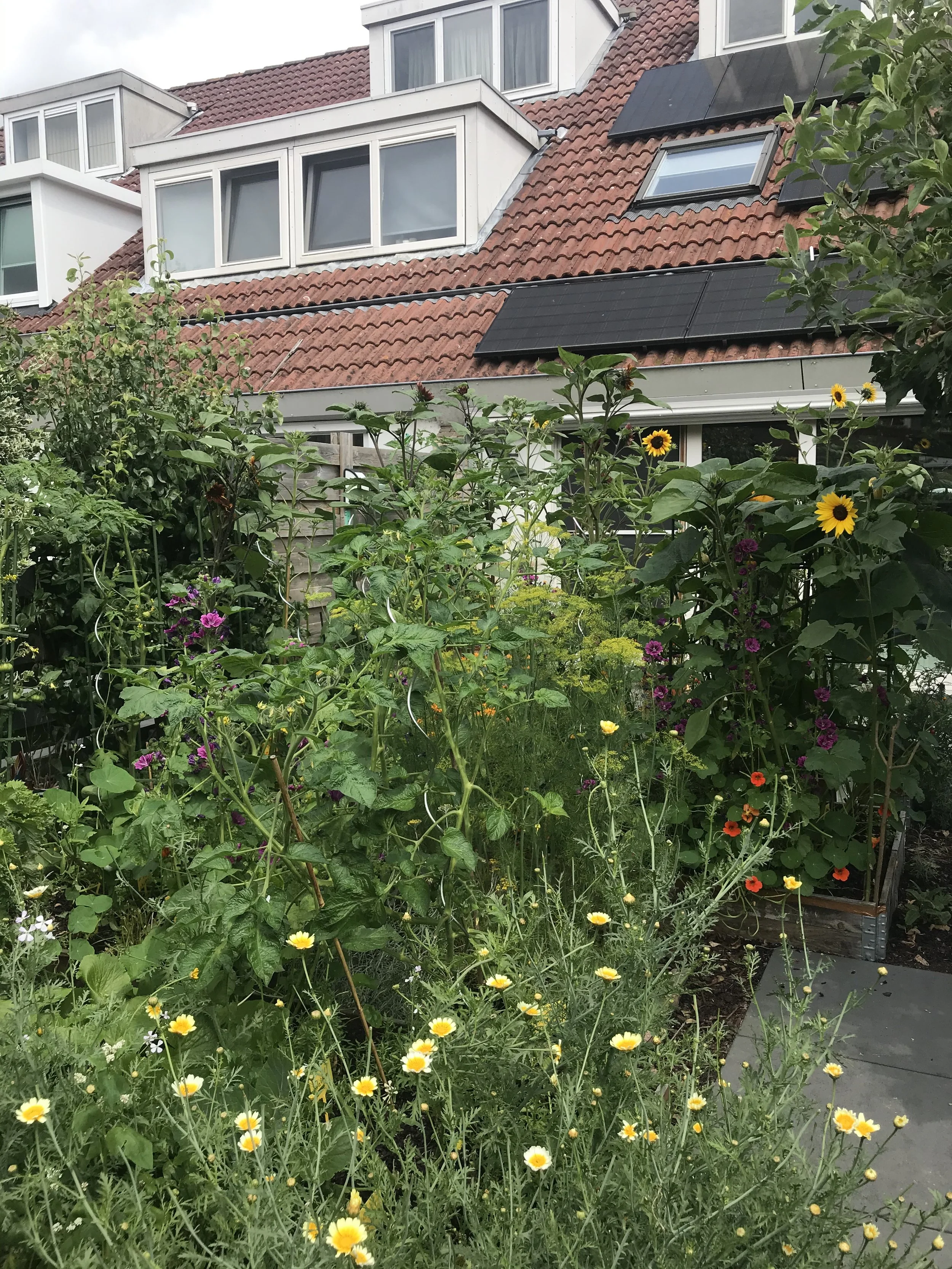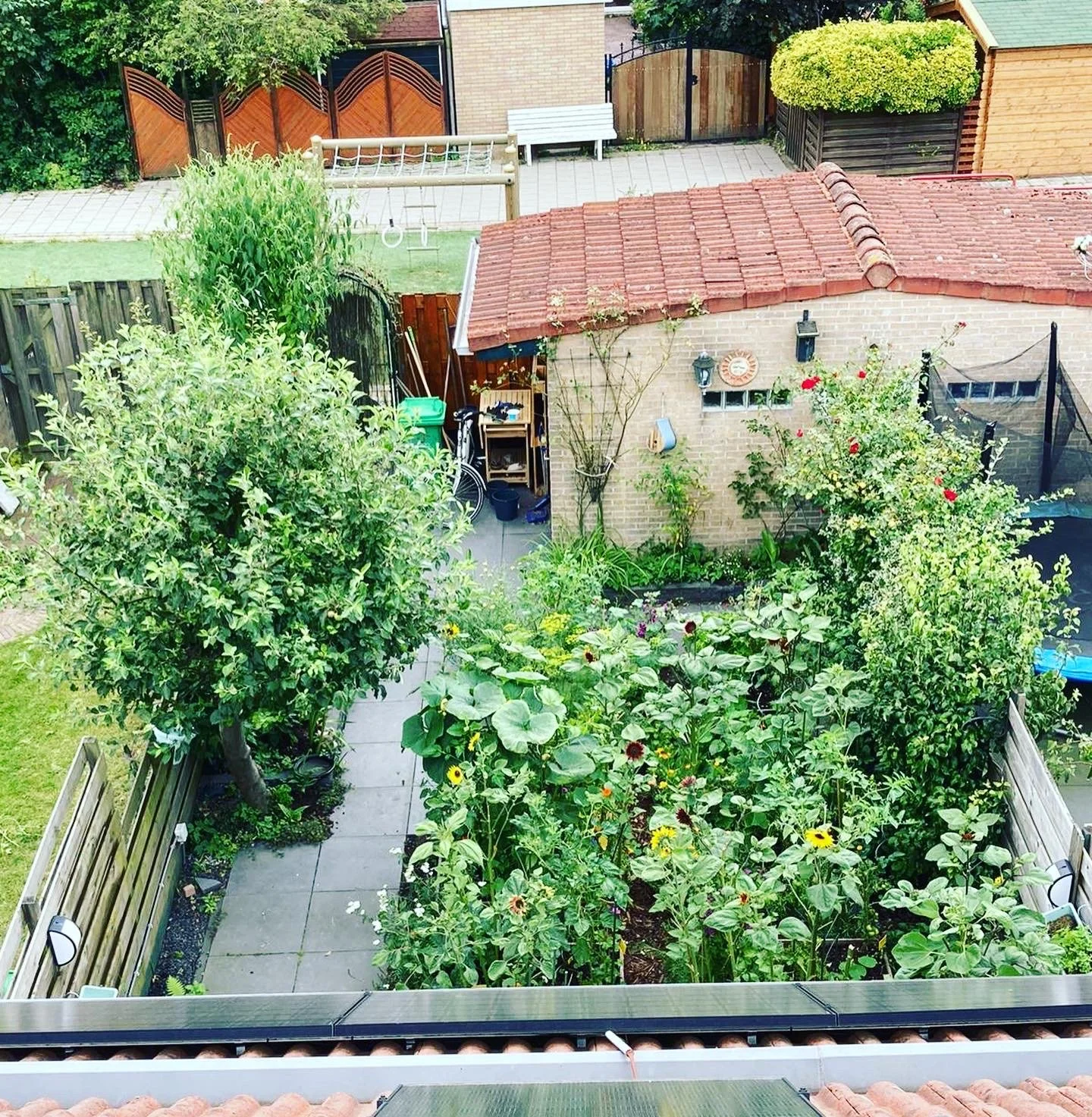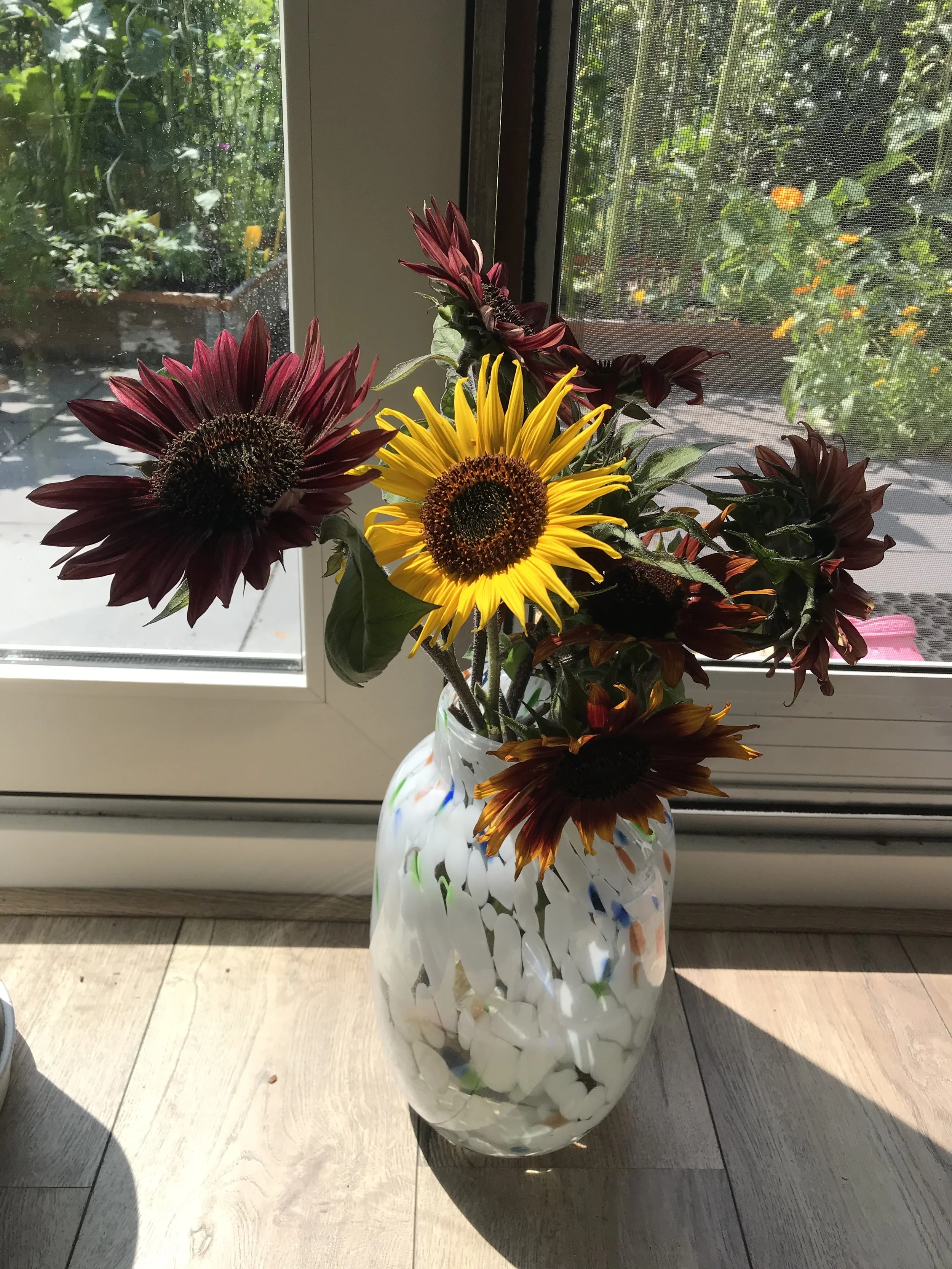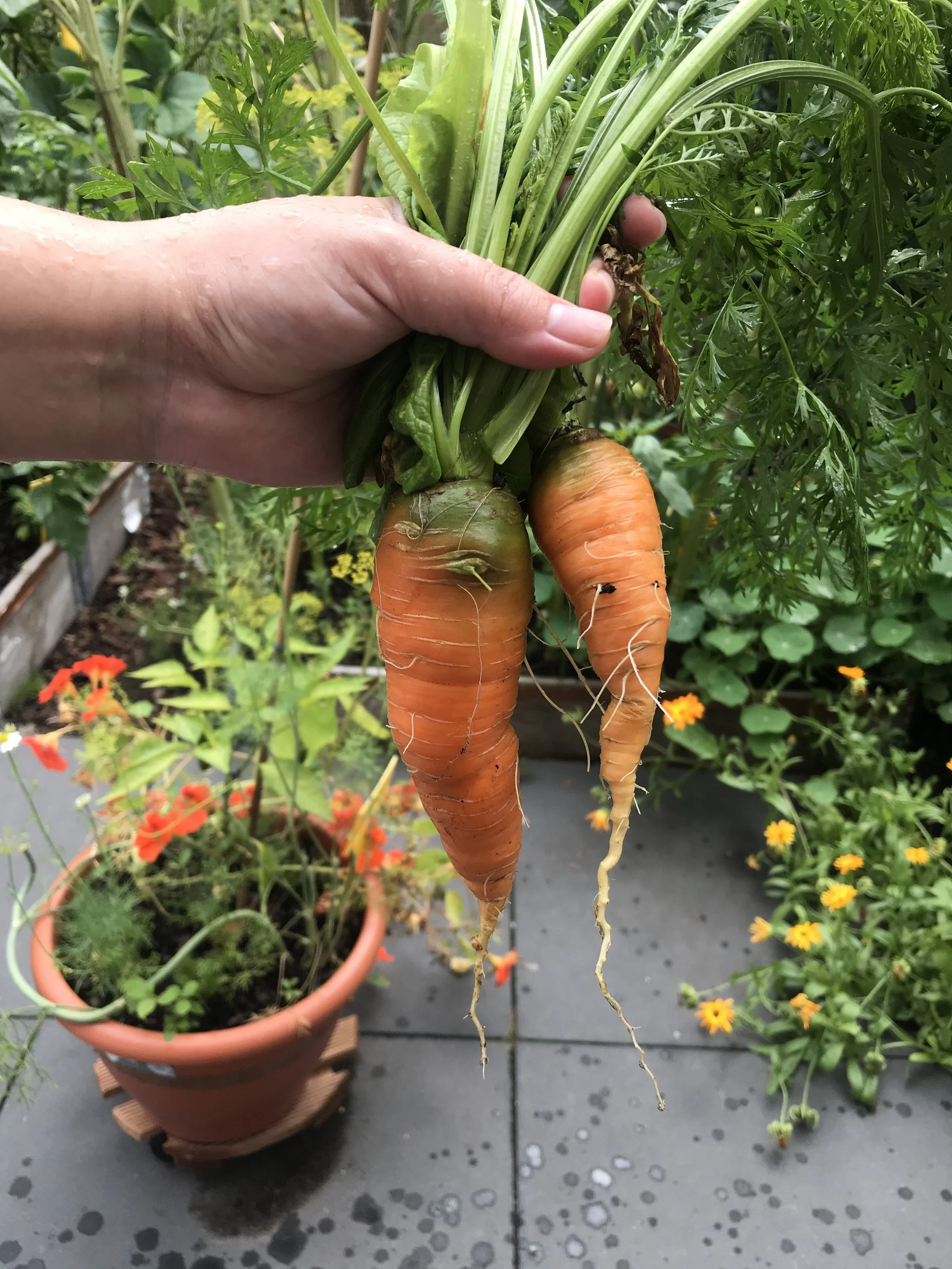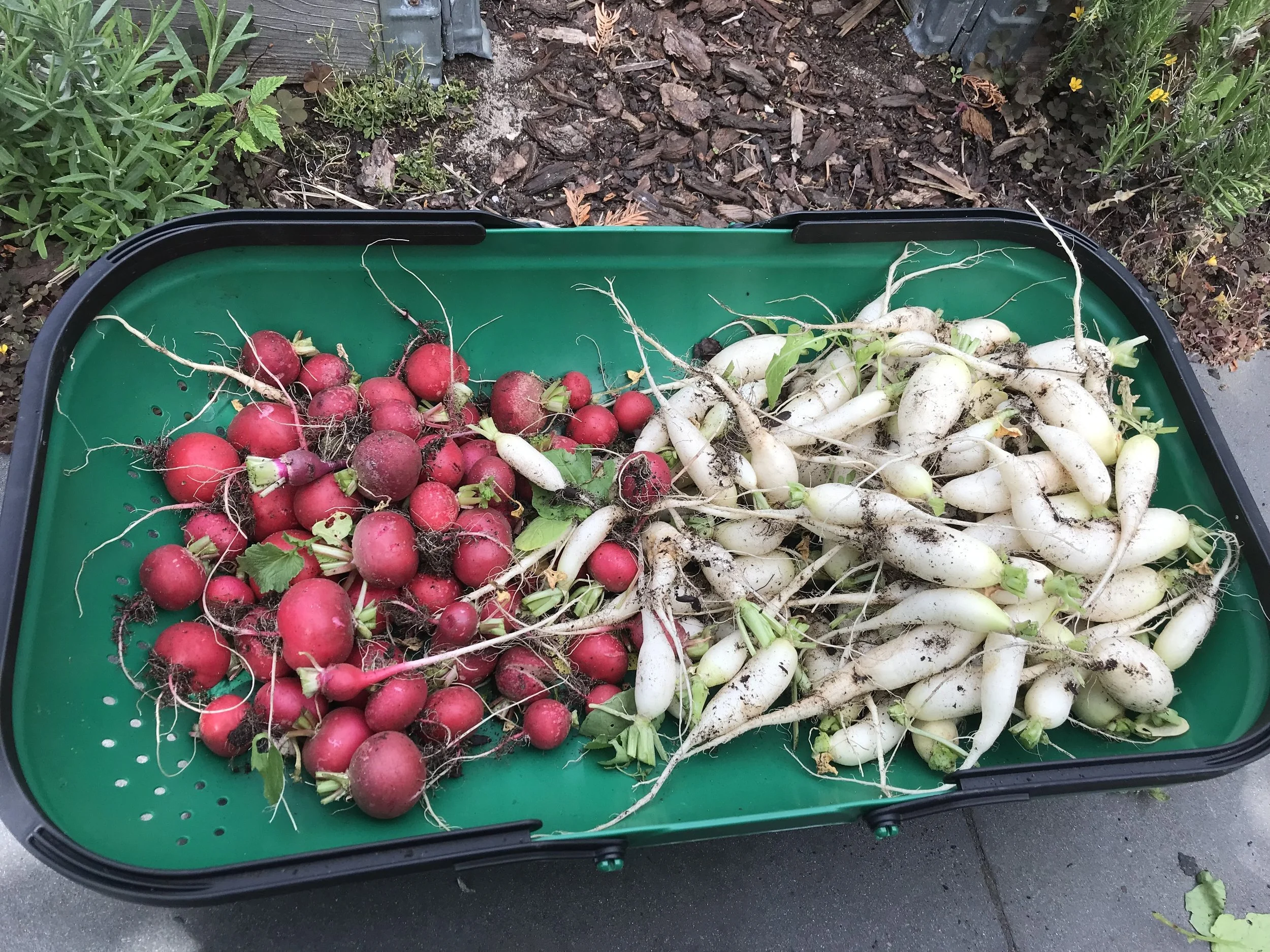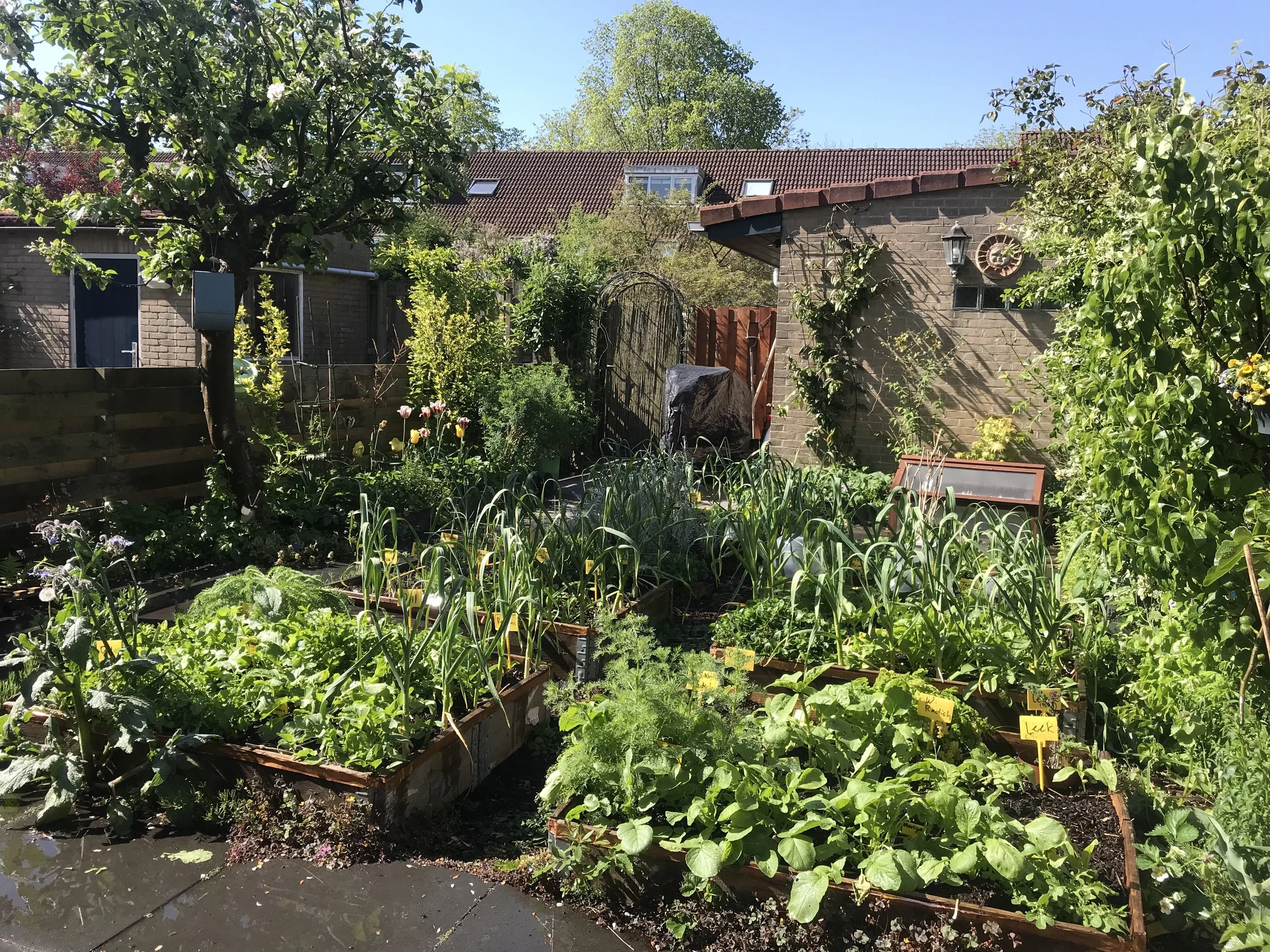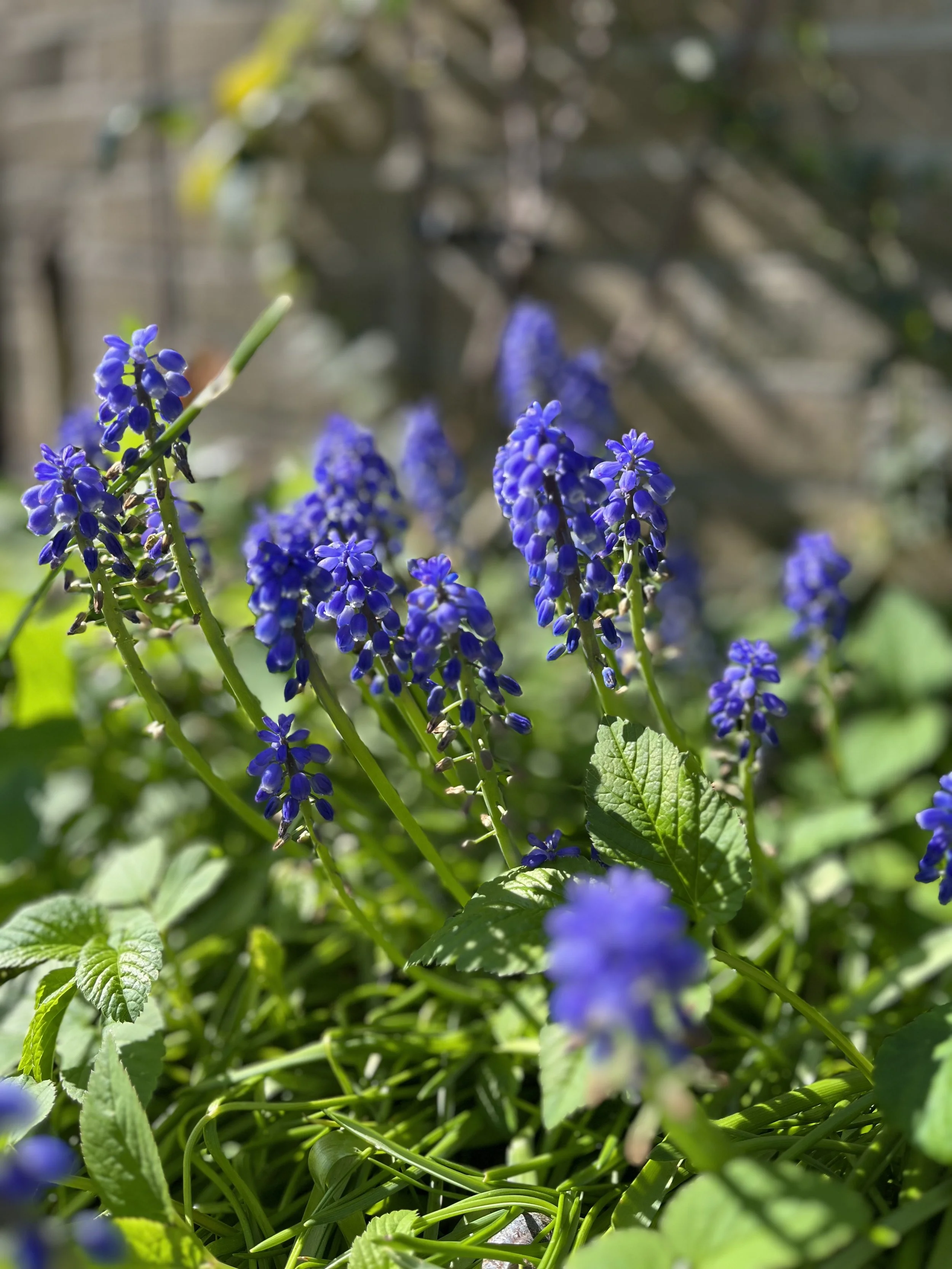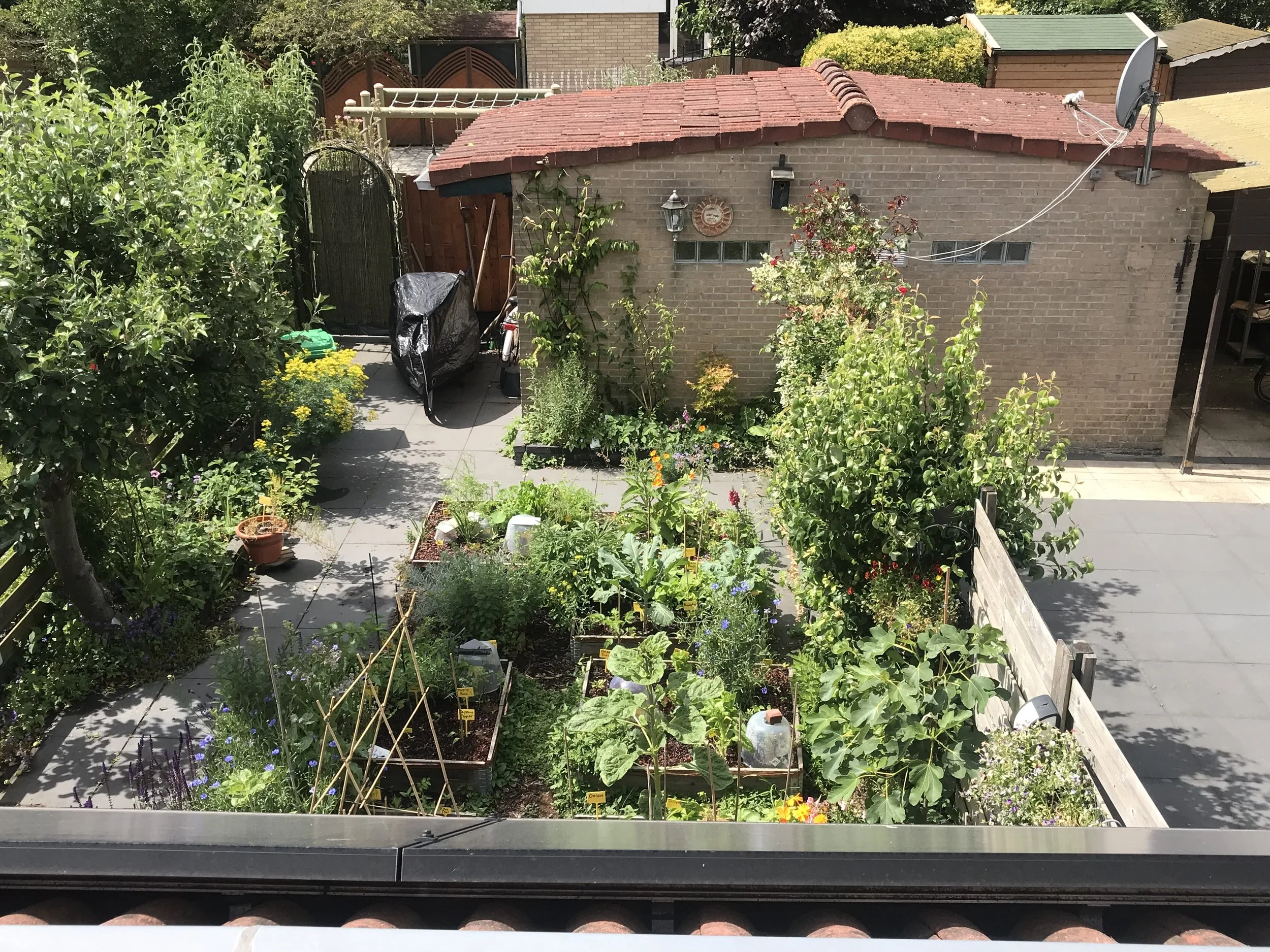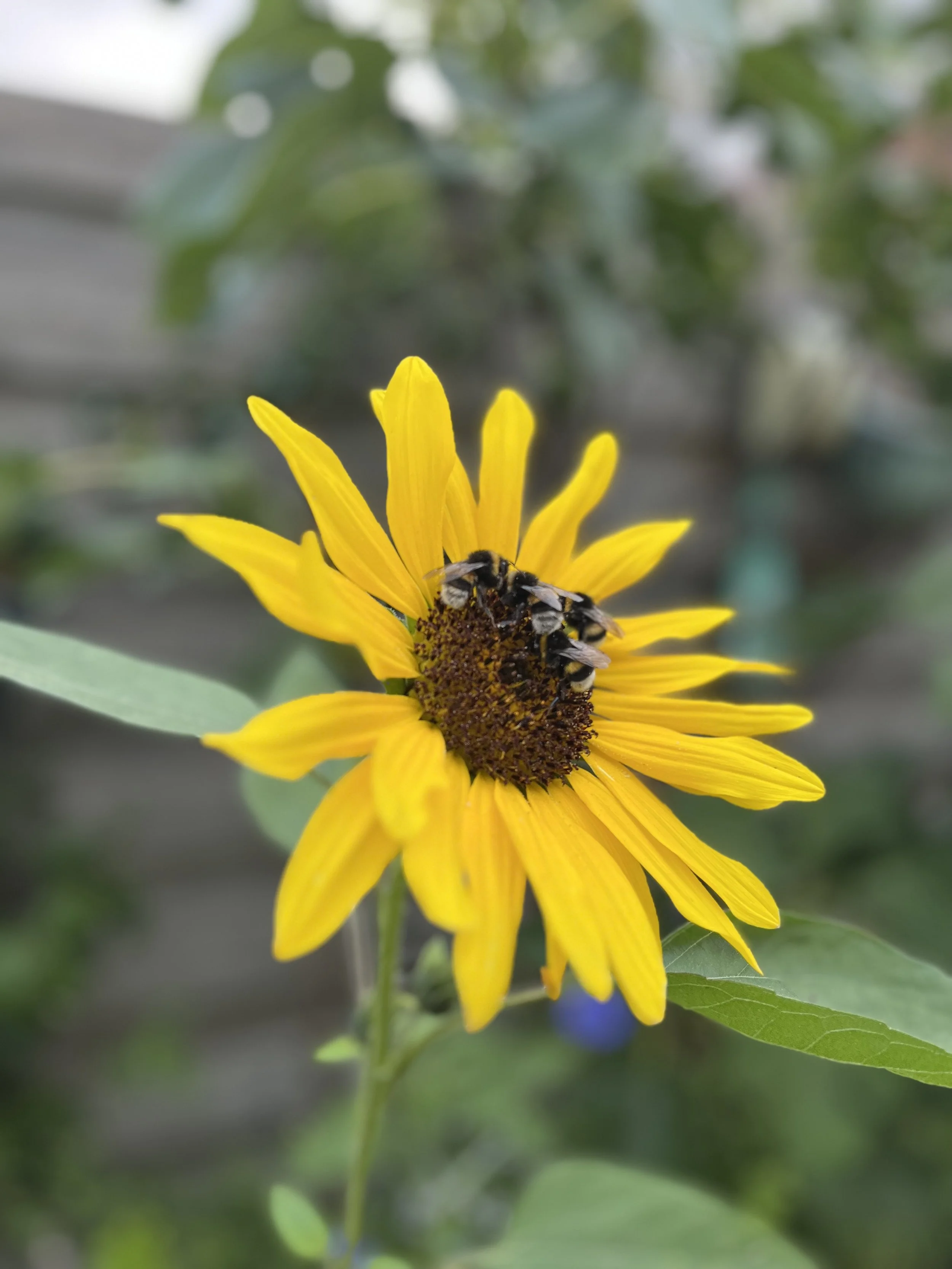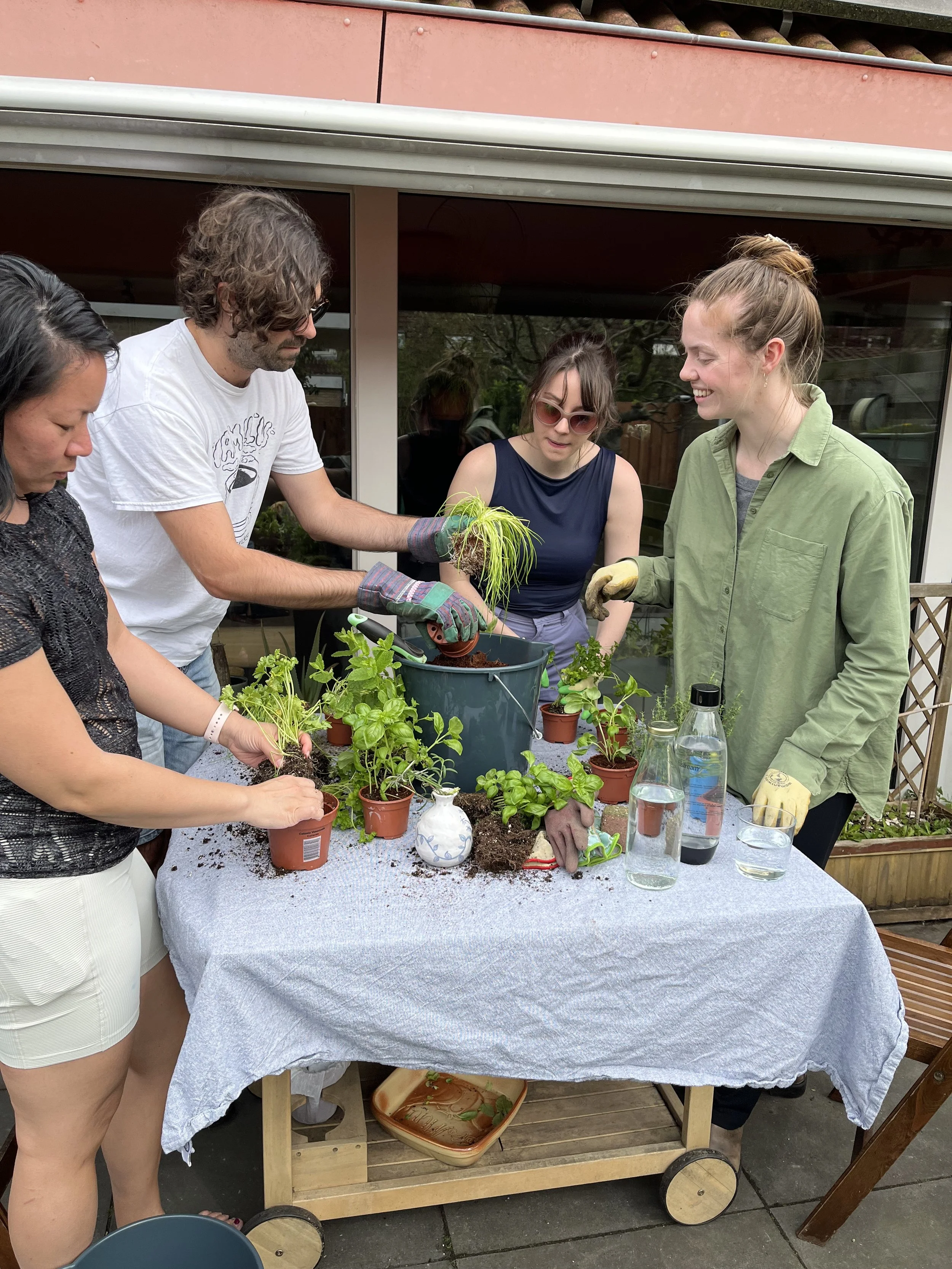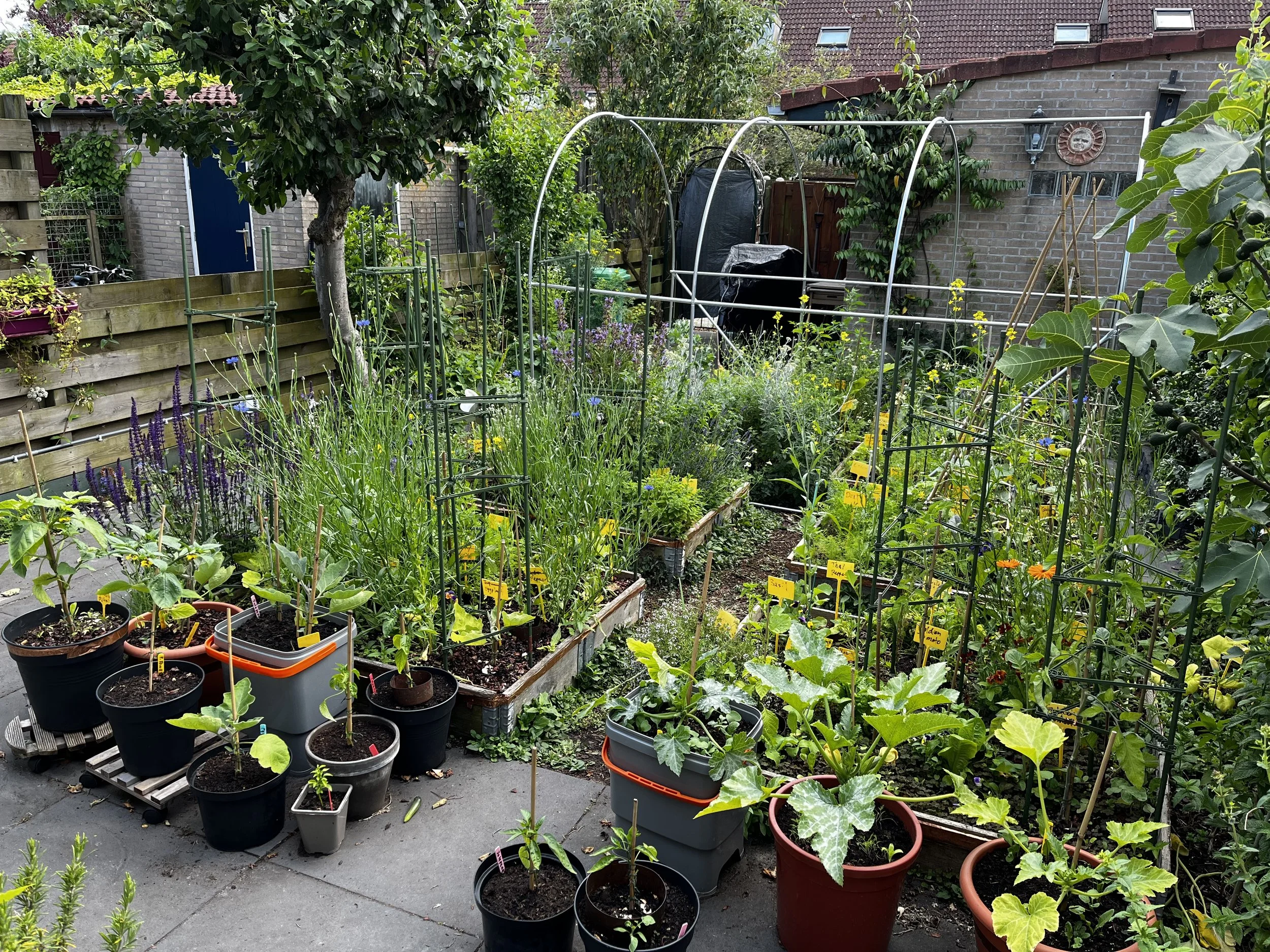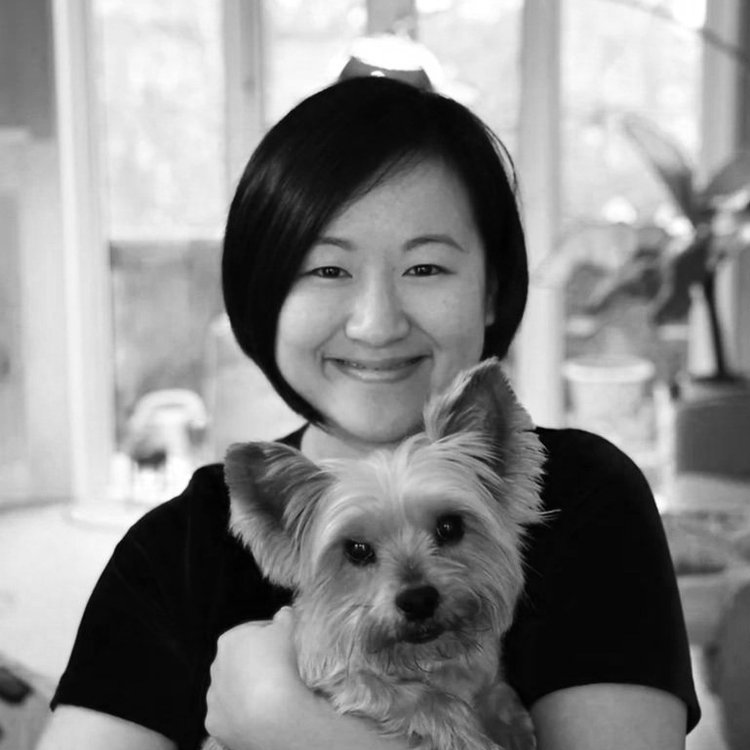Garden Transformations -1
From tiles to tomatoes
The transformation of a backyard into an edible oasis
As I sit here in my garden soaked with the warm March sun, listening to the first insect buzz of the season, my heart is filled with gratitude for the wonders of nature. I am also immensely grateful for people who have encouraged and enabled me to do what I love, to cultivate my (inner) garden.
Amid COVID lockdown in 2020, my husband and I were crammed into a small space in Amsterdam West, talking over each other on work phone calls. That’s less of the problem: we realized we spent a majority of time inside in front of digital devices, and couldn’t tell the beginning or end of a workday apart. We needed more space, both mental and outdoor space; we needed movements; we needed connections, both with ourselves and nature. For myself, the desire for gardening had become too mighty to ignore.
You see, I had taken a permaculture gardening course called “Get Down, Get Dirty” (GDGD) from Cityplot back in 2018, and since then I had started growing vegetables on our small, north-facing balcony.
I fell in love with gardening and learning about permaculture: it made me aware of where food comes from, opened my eyes to the interconnectedness of everything alive, and activated my thoughts to ponder how we can be useful to this process and ecosystem. While it was good to dip my toes in the world of gardening with a balcony, I craved to do more: more space to grow a variety of veggies and insect-friendly plants, to truly practice polyculture, and to provide for/give back to other living beings. Gardening is a meditative and fulfilling practice that I find both grounding and elevating.
We looked and were lucky enough to find a place with a garden in Amsterdam Noord: 50 square metres of playground and canvas. Here is the garden when we first moved in, mostly tiled, with a couple of fruit trees and some shrubs around the borders.
It was daunting at first, especially because I managed to severely injure my right leg and knee from a bike accident before the move. After a few surgeries, I was still on crutches and going through physical therapy when we moved in. How am I even going to begin gardening here? Well, the need and desire to garden helped me through my recovery by getting me off the couch and moving! With the help and support of my husband, we managed to remove about 80% of the heavy tiles. What welcomed us next was thick layers of sand.
From the GDGD course, I knew that sand or sandy soil does not contain sufficient nutrients for growing most vegetables, although it is still “soil”. In fact, some root vegetables prefer less nutritious soil or sandy soil. What I did next was to put a 10 cm layer of organic compost (from Bio-kultura) on top of the sand, without removing the sand.
After deciding that there might not be sufficient nutrients for some of the vegetables I wanted to plant that year, I added 6 low raised bed frames to provide a thicker layer of soil and compost for the vegetable beds. You can build your own vegetable beds, or if you are lazy/not-so-handy like me, you may find used shipping containers (like this one) useful - for safety growing food, make sure to select ones that are not treated by chemicals (treated by heat is ok, such as the ones in the link).
I also added dead leaves and bokashi in the beds before covering them with purchased compost (I hadn’t started making my own yet).
The picture on the left was taken in February, and the ones on the right and below, were taken in May — within a few short months the garden was transformed.
Above: Aerial views
In the first round of seeding I grew lots of green manure, flowers, and small root vegetables such as radishes (they are easy to germinate and have short growing season). This provides the soil an opportunity to get healthy for fruity vegetables such as tomatoes and cucumbers that thrive in richer conditions. Here are my harvests from the first year:
Some of you must be thinking: this is too much work, or too scary, or that vegetables are too difficult to grow especially in the wet, mild conditions of the Netherlands. All these thoughts are valid, and were exactly my concerns before I started: I used to fear dirt and insects, and was convinced my thumbs were the opposite of green (whatever that color is). To say I have come a long way is to say the least. I guess what I am trying to say is: if I can do it, you can too!
The benefits of gardening are both internal and external: by cultivating vegetables, flowers and fruits, we are giving back to the world that we constantly are taking from.The joy and fun of gardening is to enjoy the process, to give yourself the space to observe, create, grow, learn, connect and ponder. During this process, we also get to learn about nature and rethink the role we play in it. So if you have a tiled garden, please don’t let the fear of doing extra or failing stop you from turning it into a lush green garden that’s good for you and the environment.
If the above are not good enough reasons, there are also different organizations/initiatives such as NKtegelwippen, encouraging people to replace the tiles with plants. The Amsterdam Gemeente also has a subsidy for people who are interested in doing so. For those who worry about unwanted tiles piling up at home, the tegeltaxi service will pick up your tiles for free.
More pictures below to take you through my journey during the last 4 years.
Year 2 & 3 - continued building soil health & biodiversity, growing different vegetables, perennials
Year 4 - a thriving, biodiverse garden to share with people and other animals:
Most recently since 2024, I started my own gardening business, as well as joining the Cityplot collective in encouraging more people in the city to grow their own food and their green thumbs. Being able to do what I love and share the joy of gardening is a privilege that I will never overlook. I have everyone at Cityplot to thank for, especially the GDGD course, as well as my teacher Suzanne Oommen, who has since moved to Sweden and started Cityplot Sweden. For those who are not able to attend a GDGD/permaculture course in-person, you are in luck because she is teaching an online version of the course! In terms of my own workshop offering, here is a Beginner’s Gardening workshop (suitable for small, urban spaces), hosted in my own home and garden. I also teach similar workshops at companies and events. So fear not my dears, as all Cityplot’s workshops, classes and courses will guide you through your own food/plant growing journey that’s friendly to your schedule and living space/style.
Written and photographed by Amy Liu, gardener, natural beekeeper, artist, student and proud member of the Cityplot collective. For more on what she does, you can check out her website Beezy Tiger and follow her on Instagram .
Written and photographed by Amy Liu, gardener, natural beekeeper, artist, student and proud member of the Cityplot collective. For more on what she does, you can check out her website Beezy Tiger and follow her on Instagram.
